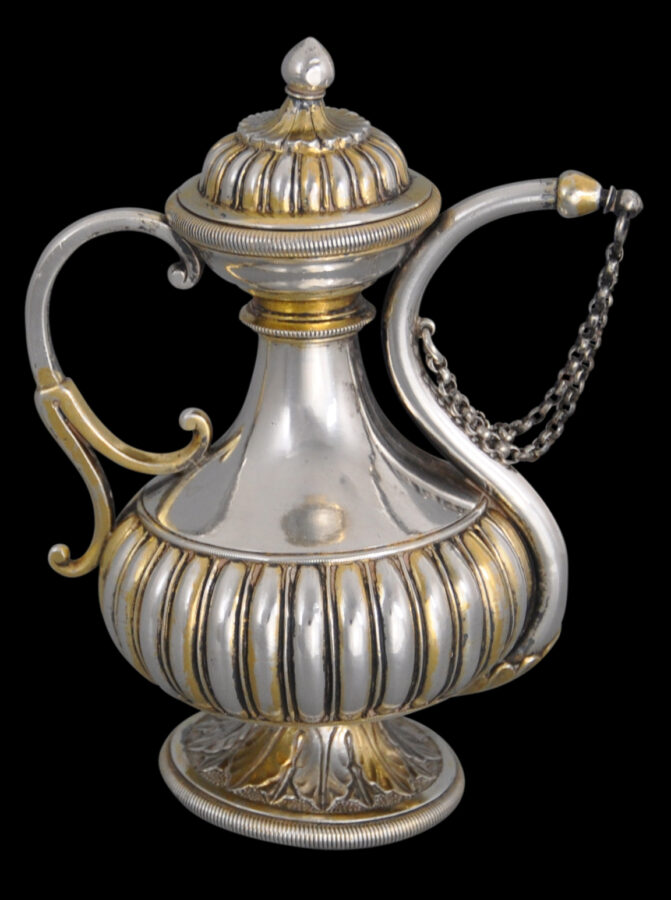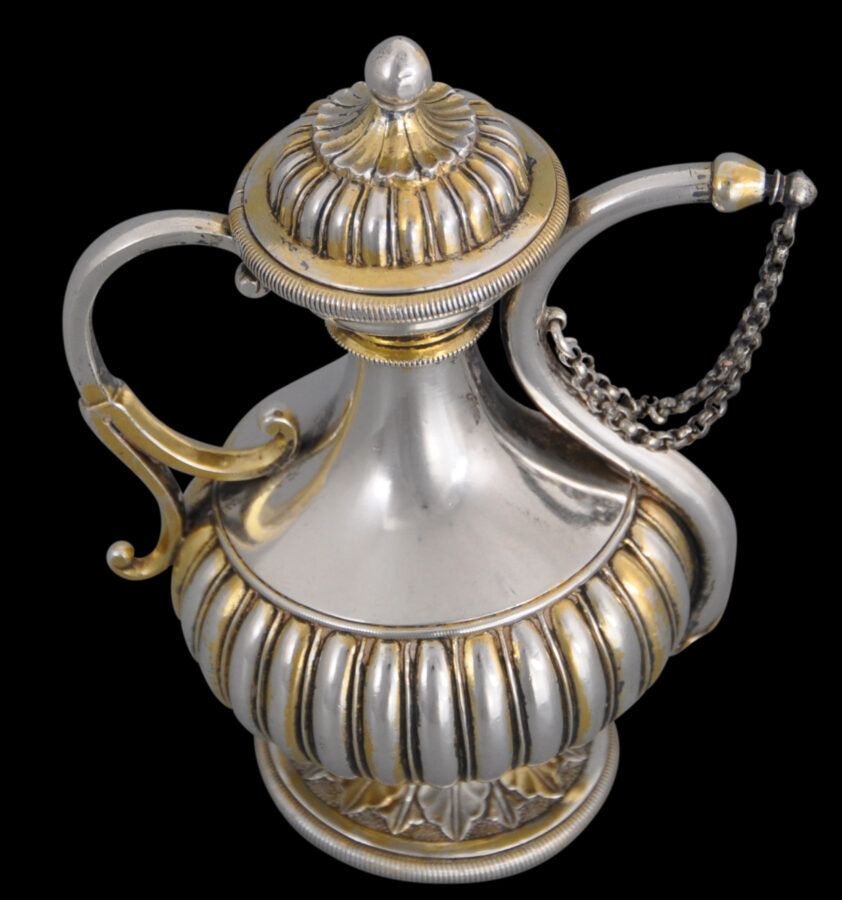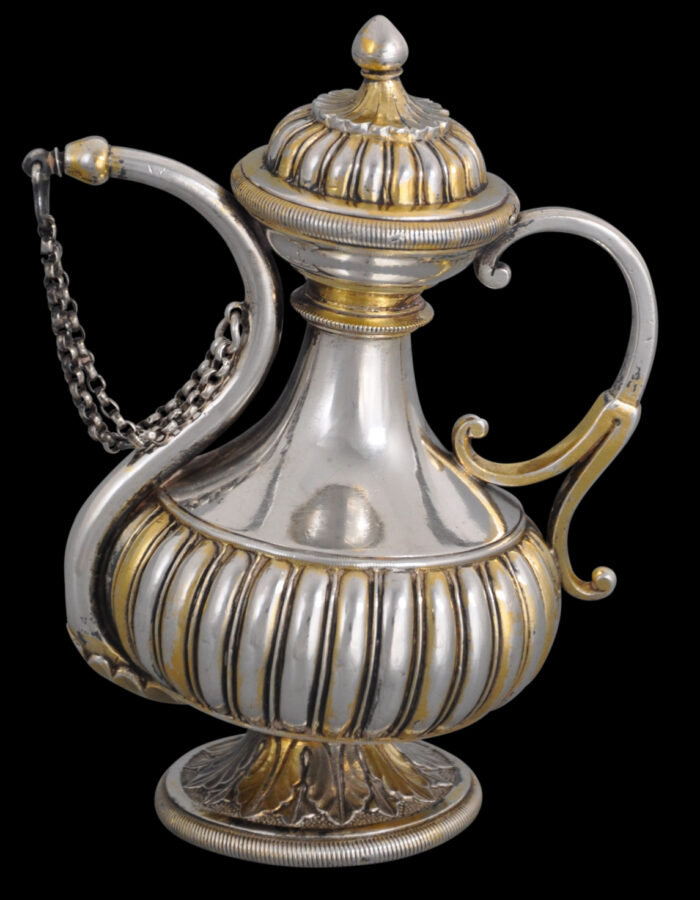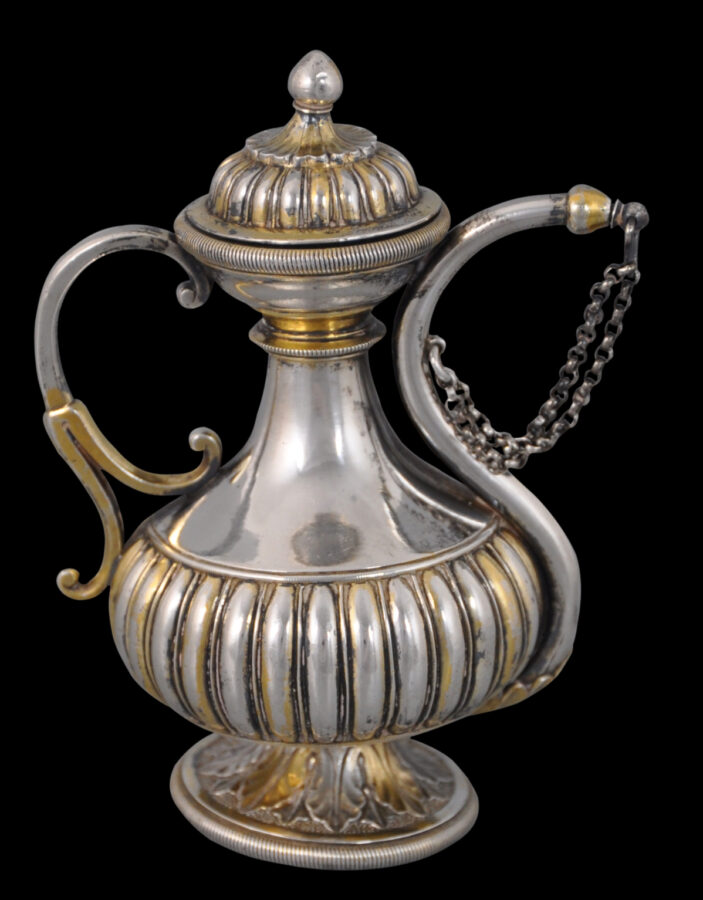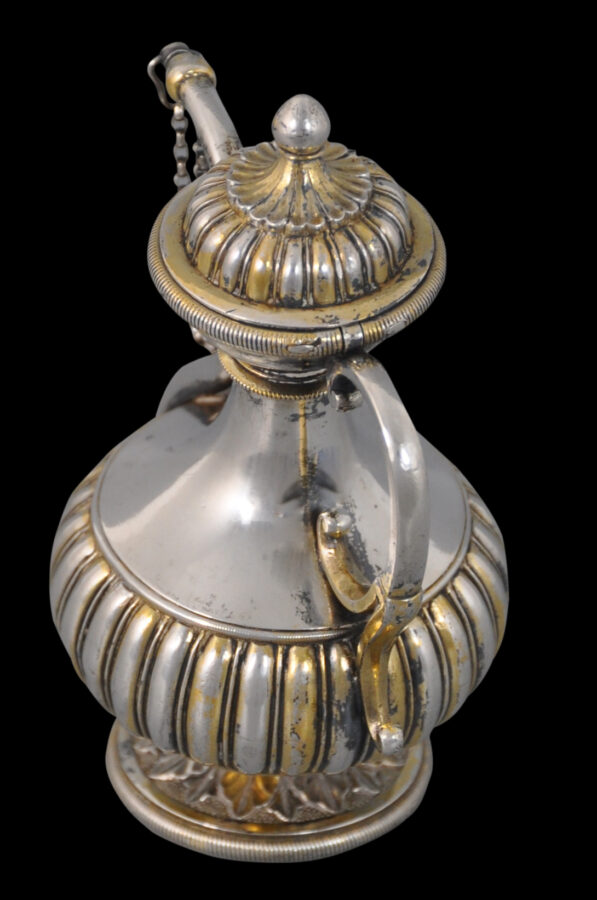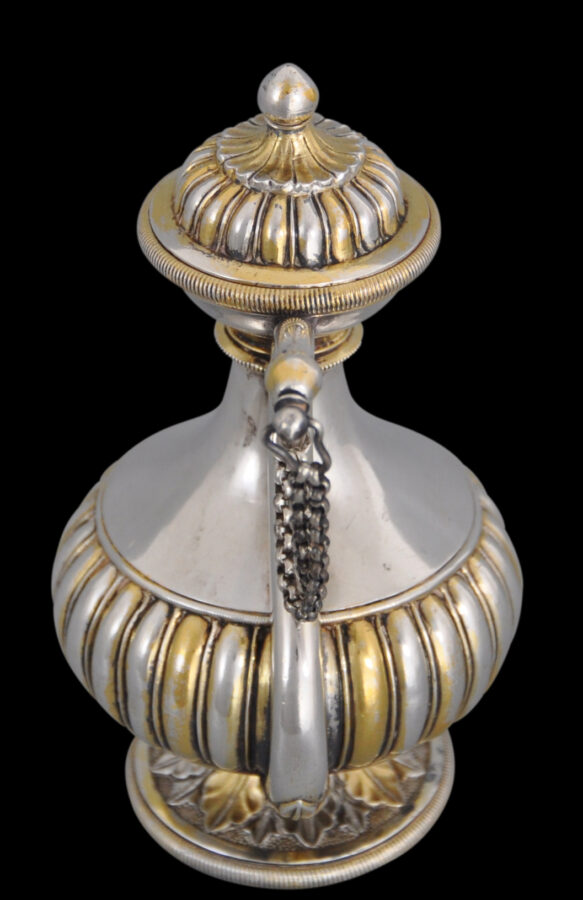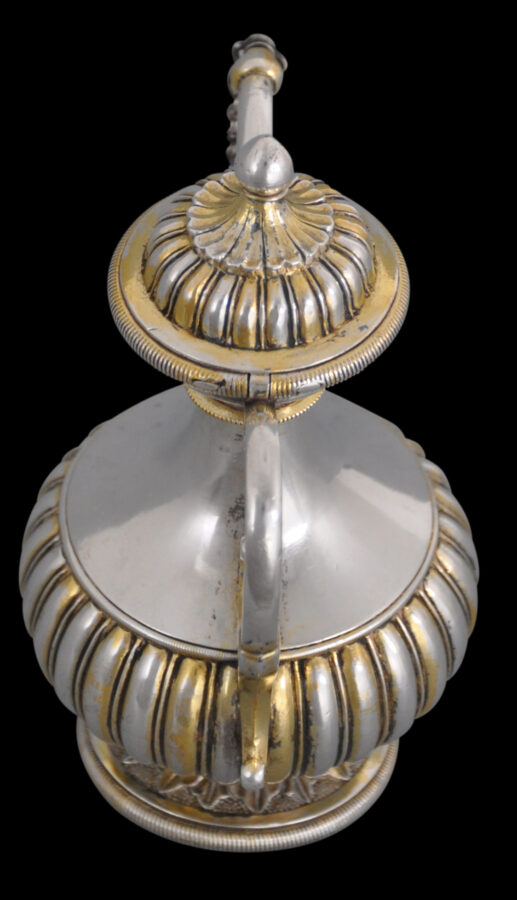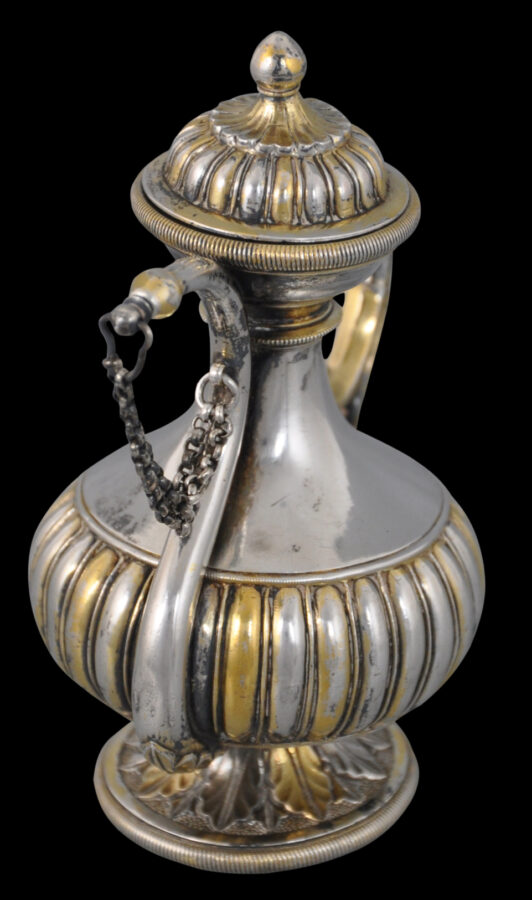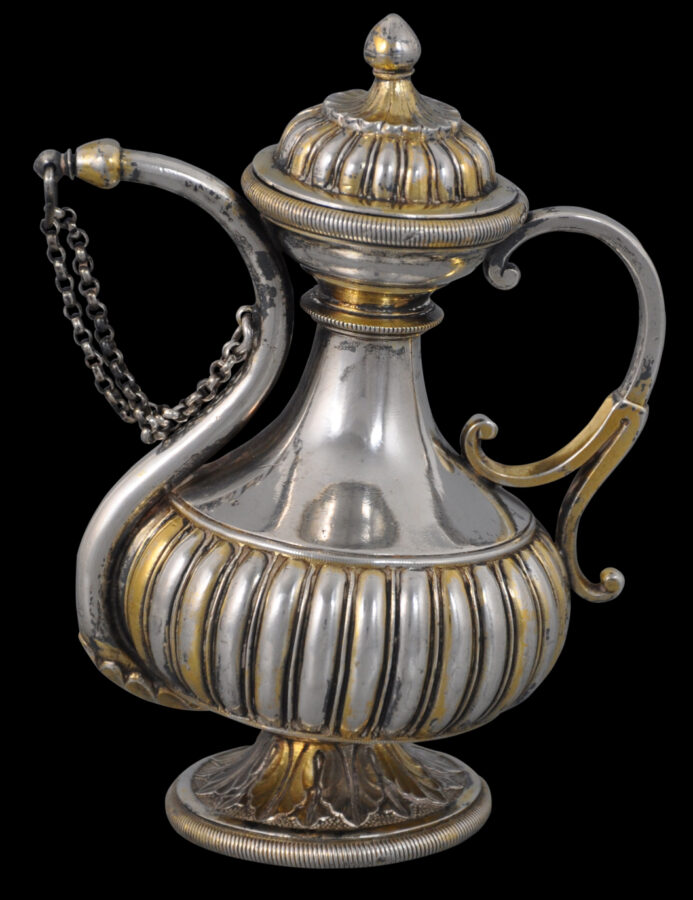This beautiful silver vessel (chuski) is from Northern India or the Deccan and was used to offer guests wine (araq) or opium water. It dates to the 18th century.
The flask is heavy in the hand. The walls are of thick silver and silver was not economised on in its manufacture.
The flask has been made so that the body tilts at an angle – this is deliberate. It minimises dripping and also reduces the chances of the fine spout from becoming blocked. Opium and opium water were viscous particularly in hot climates.
The body is of flattened spherical form, with fine ribs all the way around. The domed lid is similarly ribbed.
The foot is domed and chased with acanthus leaves. The base of the spout is similarly chased with acanthus leaves.
The original, double silver chain attached to the spout leads to a small bud-like stopper that fits in the mouth of the spout.
A fine, ‘S’-shaped spout emerges from which the contents are poured. A proportionate handle with a split terminal balances the vessel from the other side.
The beauty of the vessel is enhanced by it having been parcel gilded (part gold plated) and this gilding has softened and worn over the years to have a delicate, pleasing hue. The ribs on the body and cover for example and alternately gilded and left plain. The acanthus leaves on the base of the spout similarly have been gilded and so on.
Opium usage was common in northern India. It was a part of normal social interaction and for some, an addiction. The Bodleian Library at Oxford, United Kingdom, has in its extensive collection of Mughal miniature paintings one of the dying ‘Inayat Khan, dated 1618. The painting shows the courtier to the Mughal emperor Jahangir, laying on a bed and propped against cushions. His body is wasted and shrivelled, his face sullen and his eyes blank: the courtier is about to die, a result of opium and alcohol addiction. The Emperor was so appalled and fascinated by ‘Inayat Khan’s extreme condition that he mentions it in his memoirs.
The flask is in excellent condition and has a splendid patina and colouration.
References
Terlinden, C., Mughal Silver Magnificence, Antalga, 1978.
Topsfield, A., Indian Paintings from Oxford Collections, University of Oxford, 1994.


